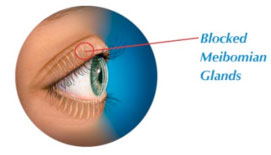State-of-the-Art Dry Eye Disease Testing & Treatment Center (Chinese Version)

Our Horsham Optometrist want you to be educated about Dry Eye Disease. Dry eye disease can be divided into two major categories: patients with poor tear production and evaporative dry eye. The tears of our eyes are a complex composition of oils, mucin and liquids. In order for our tears to adequately lubricate the structures of our eye’s they need to have the correct saltiness (osmolality), liquid, mucin and oily component. If any of these are not in the correct proportion, we may experience symptoms of dry eye disease.
Symptoms of dry eyes include:
|
|
|
|
|
|
|
|
Poor Tear Production:
Patients who have been diagnosed with poor tear production can be treated in a variety of ways. For patients with relatively mild dry eyes, the use of artificial tears can often relieve their symptoms. There are a variety of artificial tears that your doctor can prescribe, all of them are over-the-counter. These can be used as infrequently as once or twice a day to as frequently as every half-hour and more often. For patients who are allergic to the preservatives in some artificial tears and for those who will be using it frequently, your doctor may prescribe preservative free artificial tears.
In addition to doing the above, your doctor may suggest occluding the tear drainage canals, punctum, in order to allow the tears you produce to linger on your eye longer instead of being drained away. There are several techniques used to occlude the punctum: some temporary and some permanent. What is best for you should be discussed with your doctor.
Evaporative Dry Eye:
Patients with evaporative dry eye disease often have adequate tear production. However the layer of oil that sits atop of the liquid layer may be lacking or disrupted. It is this fine layer of oil that prevents the liquid component of your tears from evaporating. Several causes that may contribute to evaporative eye disease are an incomplete blink, and eyelid or eyelash infection, meibomian gland dysfunction to name a few.
 Our doctor may suggest lid exercises that re-train your lids to close completely, allowing the oily layer of the tears to be distributed equally throughout your eye. If there is an infection, antibiotics and or steroids, anti-inflammatory medication, may be prescribed. In addition your doctor may suggest starting an Omega 3 regimen with 1500 -2000mg a day. For moderate to severe dry eye patients who have the evaporative form of dry eye an FDA approved therapy called LipiFlow may offer long-term relief.
Our doctor may suggest lid exercises that re-train your lids to close completely, allowing the oily layer of the tears to be distributed equally throughout your eye. If there is an infection, antibiotics and or steroids, anti-inflammatory medication, may be prescribed. In addition your doctor may suggest starting an Omega 3 regimen with 1500 -2000mg a day. For moderate to severe dry eye patients who have the evaporative form of dry eye an FDA approved therapy called LipiFlow may offer long-term relief.
To see if you are a potential candidate for LipiFlow, before considering a consult, complete the SPEED questionnaire.
TearScience LipiFlow
Watch this video to learn more,


